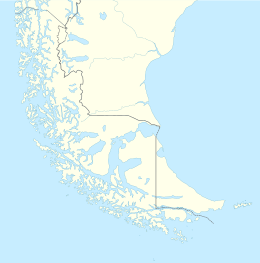Hornos Island
| Native name: Isla Hornos | |
|---|---|
 The Hornos Island | |
 Hornos Island | |
| Geography | |
| Coordinates | 55°56′39″S 67°16′51″W / 55.944078°S 67.280925°W / -55.944078; -67.280925Coordinates: 55°56′39″S 67°16′51″W / 55.944078°S 67.280925°W / -55.944078; -67.280925 |
| Archipelago | Tierra del Fuego |
| Adjacent bodies of water | Pacific ocean / Atlantic ocean |
| Administration | |
Chile | |
| Region | Magallanes |
| Province | Antártica |
| Commune | Cabo de Hornos |
| Additional information | |
NGA UFI= -884347 | |
Hornos Island (Spanish: Isla Hornos) is a Chilean island at the southern tip of South America. The island is mostly known for being the location of Cape Horn. It is generally considered South America's southernmost island, but the Diego Ramírez Islands are farther south. The island is one of the Hermite Islands, part of the Tierra del Fuego archipelago.
The Chilean Navy maintains a station on the island, consisting of a residence, utility building, chapel, and lighthouse.[1] A short distance from the main station is a memorial, including a large sculpture featuring the silhouette of an albatross, in honour of the sailors who died while attempting to "round the Horn".[2]
The island is within the Cabo de Hornos National Park.
Geology
The composition of the island is mainly of Cretaceous granite with Jurassic volcanic rocks in the northwest. The lower areas of the island are filled with peat moss.
Climate
Mean Temperature: 5.3° Celsius
Maximum Temperature: 20.5° Celsius (February 1996)
Minimum Temperature: -14.5° Celsius (June 1992)
Mean Relative humidity: 86.4%
Mean Wind Direction: 264°
Mean Wind Speed: 84 knots
Maximum Wind Speed: 119 knots (August 1995)
Rainfall (yearly mean): 697.5 mm.
Maximum Rainfall: 1263.2 (1990)
References
^ Isla Hornos Lighthouse, from Lighthouse Depot. Retrieved 18 November 2014.
^ Cape Horn Memorial Archived 2005-09-26 at the Wayback Machine., by Roberto Benavente; from Fundacion Caphorniers Chile. Retrieved February 5, 2006.
This Magallanes and Antártica Chilena Region location article is a stub. You can help Wikipedia by expanding it. |